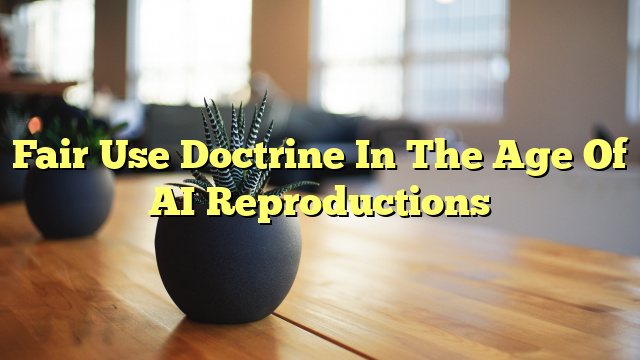Table of Contents
Introduction
The age of artificial intelligence (AI) has brought about many advancements and challenges in various fields, including the reproduction of copyrighted works. With AI’s ability to generate images and artworks, questions arise regarding the fair use doctrine and its application to AI-generated reproductions.
Understanding Fair Use Doctrine
The fair use doctrine is a legal principle that allows for the limited use of copyrighted material without permission from the copyright owner. It is based on the belief that certain uses of copyrighted works are beneficial to society and should be allowed, even if they technically infringe on the rights of the copyright owner.
The fair use doctrine considers several factors when determining whether a particular use is fair, including the purpose and character of the use, the nature of the copyrighted work, the amount and substantiality of the portion used, and the effect of the use on the potential market for the original work.
AI-Generated Images and Fair Use
AI-generated images pose unique challenges when it comes to applying the fair use doctrine. Since AI algorithms are capable of creating original works based on existing copyrighted material, questions arise regarding the transformative nature of these reproductions.
While AI-generated images may be considered transformative in some cases, it ultimately depends on the purpose and character of the use. If the AI-generated image serves a different purpose or adds new creative elements, it may be more likely to be considered fair use. However, if the reproduction merely copies the original work without significant changes, it may be more difficult to argue for fair use.
Additionally, the impact on the potential market for the original work is another important factor. If the AI-generated image competes with or diminishes the market value of the original work, it may weigh against a finding of fair use.
Copyright Laws on AI-Generated Images
Currently, copyright laws have not specifically addressed AI-generated images. However, existing laws and principles, such as the fair use doctrine, can still be applied to determine the legality of reproductions created by AI.
It is important for creators and users of AI-generated images to understand the legal implications and potential risks involved. Seeking legal advice and obtaining proper permissions when necessary can help mitigate any potential copyright infringement issues.
Conclusion
The fair use doctrine in the age of AI reproductions presents complex challenges and considerations. Determining whether AI-generated images fall under fair use requires careful analysis of the purpose, character, and impact of the reproduction. As copyright laws continue to evolve, it is essential for both creators and users of AI-generated images to stay informed and navigate these legal issues responsibly.


In today’s digital world, the Fair Use Doctrine is a vital tool in protecting against AI reproductions. Instead, consider content-agnostic laws that ensure no intellectual property infringement occurs.